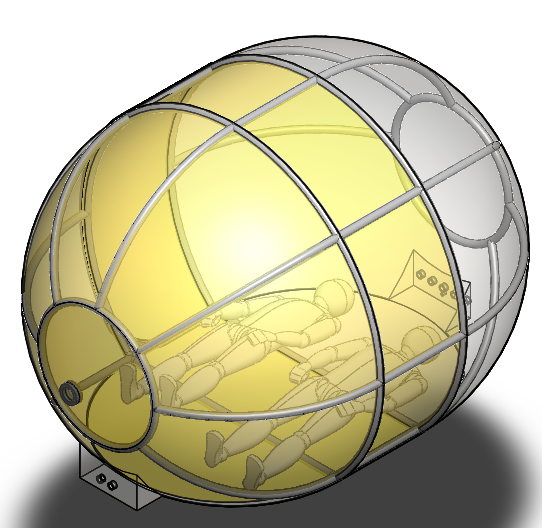An Emergency Mitigation System for Lunar Exploration
UPDATE (June 13 2015): Incredibly proud to announce this project was featured on Popular Science! Nothing like your childhood dreams coming true!
This project was a conceptual design and investigation for an overnight lunar mission with an emergency mitigation system. For this 13 person team project, I led the SolidWorks design of all the systems. I was also in charge of the high-level environmental control and life support system of the habitat, rover, and personal life support system in each of the suits.
I initially came up with a hamster ball idea where, in an emergency during an EVA on the lunar surface, an astronaut can inflate a bubble around them while emergency procedures are performed by the other astronaut. After some iterations, I decided that the inflatable bubble should be part of the rover system. I used the Apollo rover as a baseline because one point I wanted to show was that small technological changes can be used to expand terrestrial, not just lunar, exploration farther than the walk-back constraint imposed on the Apollo astronauts (They could only go as far as, if in an emergency, they could walk back to the lander.

The Rover ECLSS and space suit PLSS each had a battery, water tank, oxygen tank, a slurper, a sublimator, a thermal control unit, and a carbon dioxide scrubber. During an emergency when a suit is punctured, the injured astronaut sits in the passenger seat and inflates the emergency bubble. Inside this slightly larger space suit (essentially), the injured astronaut can take off their suit, and use the rover ECLSS for breathing air, carbon dioxide washout, and temperature regulation while the second astronaut drives the rover back to the lander.

Overnight, without an emergency, the astronauts slept in an inflatable pill that had an inner bladder layer that expanded to increase and decrease the habitable area. A visual and the conops for the use of this system are below.


Finally, an overview of the system for an overnight operation.



